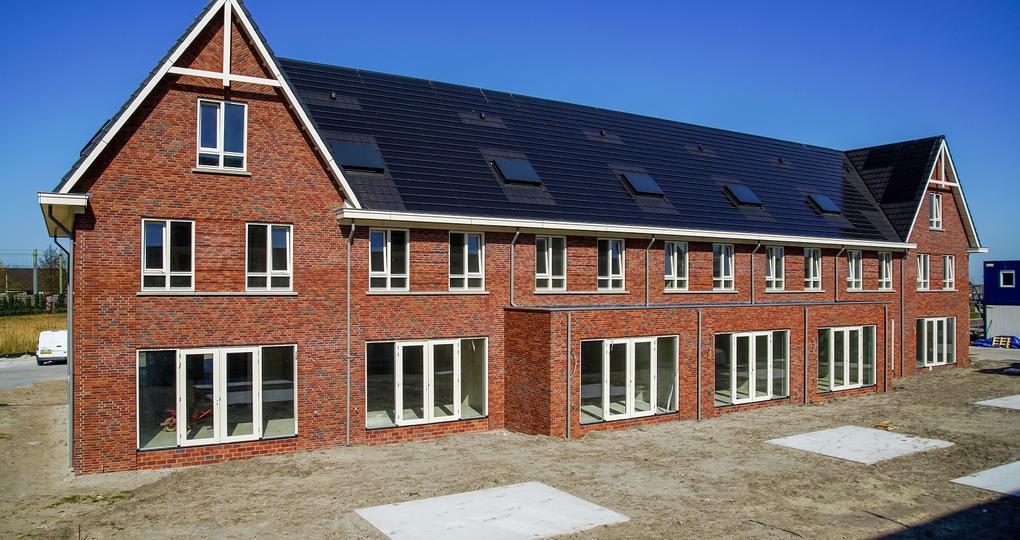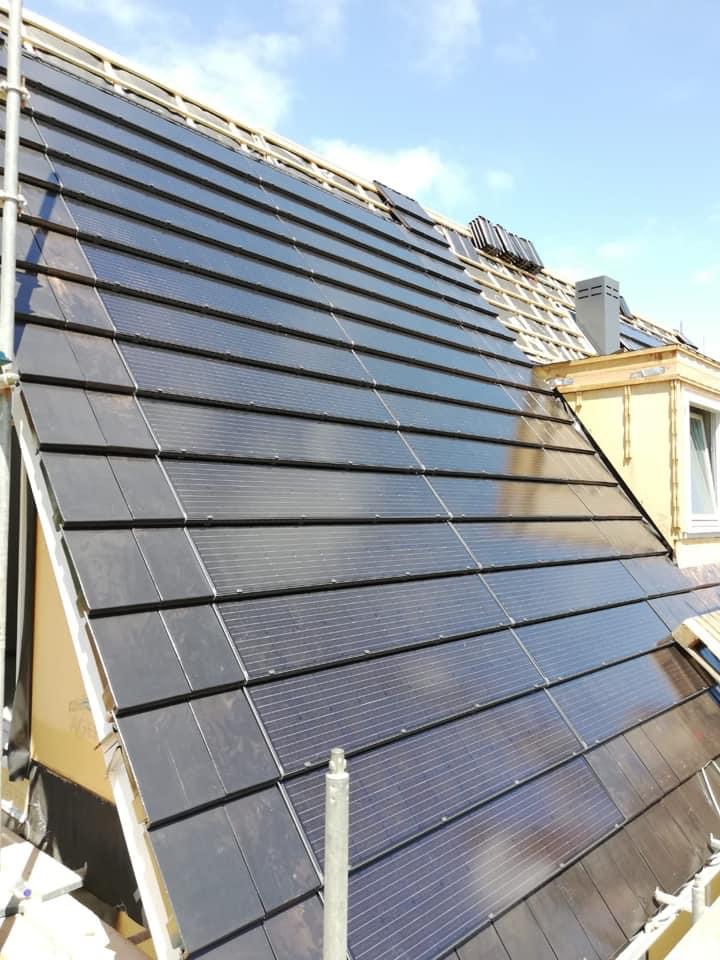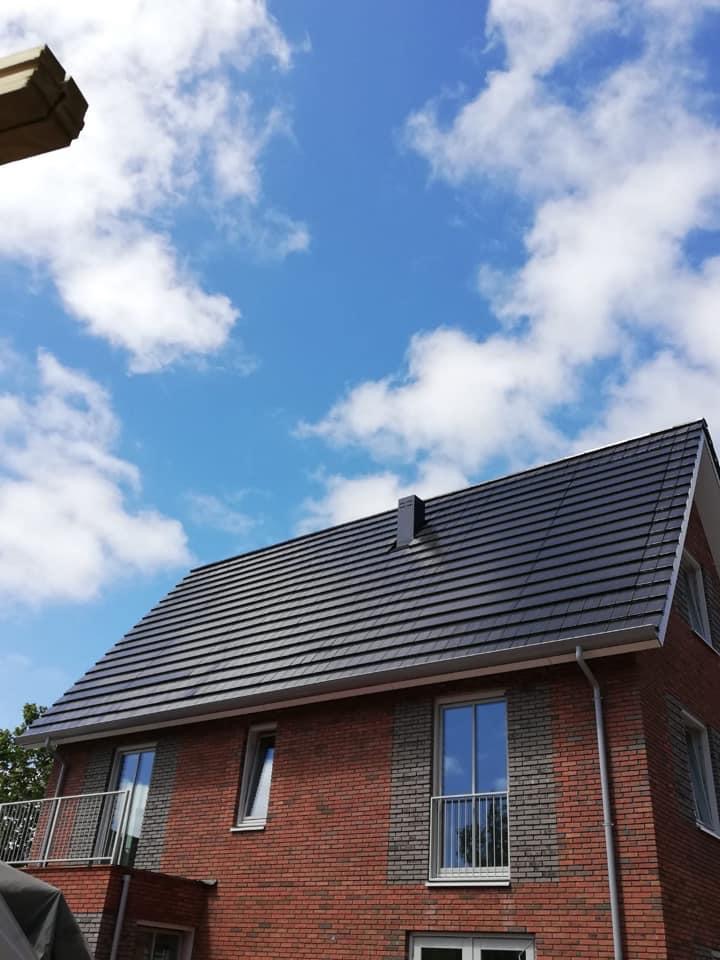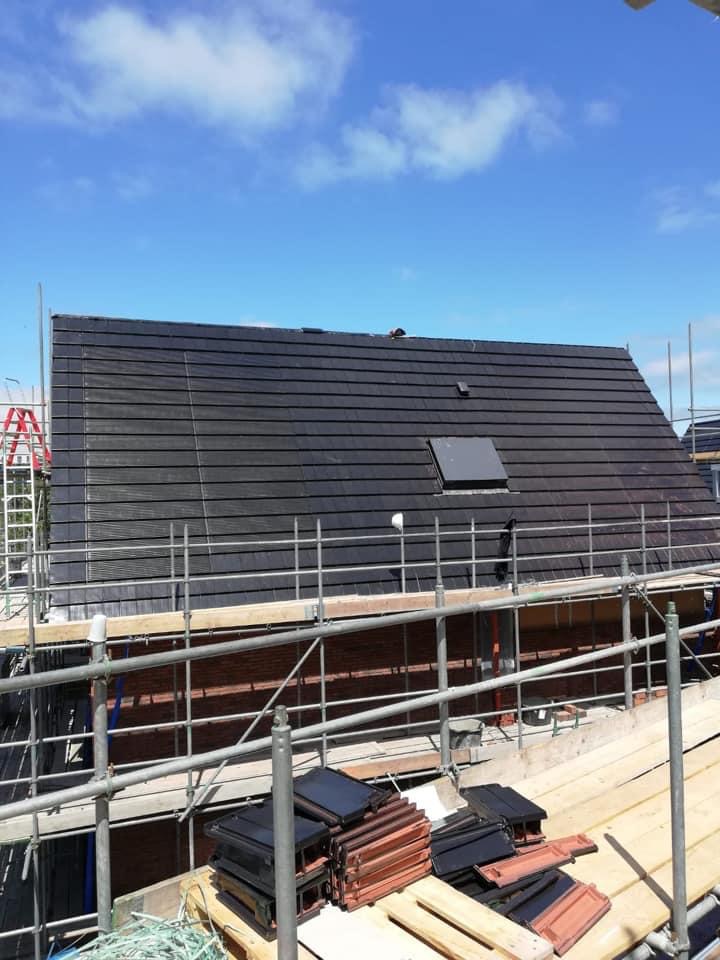bipv solar roof tiles
Solar roof tiles are made from thin photovoltaic panels that cover or replace existing tiles on your roof. They absorb sunlight and convert it into electricity. For example, homeowners will save on monthly bills and eventually recoup their initial investment by relying on this energy source instead of electricity.
they are a rapidly emerging BIPV technology designed to appear as typical asphalt shingles on residential roofs. They serve the dual purpose of protecting the roof structure while using solar energy to generate electricity. Solar roof tiles are easy to install and, like ordinary shingles, are built to withstand the weather elements.
Solar tile varieties include solar roof shingles, solar laminates, modules with integrated PV cells, and transparent laminates. These technologies are generally produced using crystalline or with thin-film solar cells. For more information on our products for solar roof tile suppliers, contractors, installers and EPCs, please consult the table below or contact a member of our solar team.
Our shingles can be used as the primary roofing material, or they can replace conventional shingles in specific areas of the existing roof.
Photovoltaic roof tiles have a sleeker, more attractive aesthetic. They are particularly suitable for use with concrete and asphalt roofs.
Photovoltaic roof tiles are weather-resistant and durable.
PV roof tiles are easier to maintain than solar panels.
Photovoltaic roof tiles have a higher return on investment if you are building a new roof.
Superior performance compared to similar BIPV offerings.
More electricity generation per square foot compared to conventional solar modules.
Serves dual purpose of roof protection and power generation.
Excellent aesthetics thanks to a sleek, hidden fastening system.
Can be integrated with a multitude of exterior wall structures and designs.
Standardized modular design facilitates and streamlines installation process
Integrated solar system improves the real estate value and energy independence
Aesthetic and effective cover to protect the building, utilising even the lowest winter sun
Easy and sustainable way of reducing direct energy costs and taxes
BIPV (Building Integrated Photovoltaics) has applications in all directions due to its ability to seamlessly integrate solar power into buildings. Some prominent application directions of BIPV include:
Residential Buildings: BIPV systems can be integrated into residential buildings in the form of solar roof tiles, solar windows or solar facades. These systems provide homeowners with renewable energy while reducing their electricity bills.
Commercial Buildings: Commercial buildings can benefit from BIPV technology by integrating solar panels into roofs, facades or canopies. BIPV systems can help commercial organizations reduce their carbon footprint, reduce energy costs and enhance their sustainability.
Public Infrastructure: BIPV can be incorporated into public infrastructure projects such as bus shelters, parking lots and noise barriers. These installations not only generate renewable energy but also serve as functional elements of infrastructure.
Urban landscape: BIPV systems can contribute to the development of sustainable urban landscapes by integrating solar panels into street furniture, bus stops and sidewalks. These devices can help cities reduce energy consumption and promote environmental sustainability.
Building design: BIPV technology offers new possibilities for architects to integrate renewable energy solutions into their designs. Architects can experiment with a variety of BIPV materials, colors, and configurations to create visually appealing and energy-efficient buildings.
Historic buildings: BIPV systems can be integrated into historic buildings and monuments while retaining their architectural integrity. Through careful selection of BIPV materials and installation methods, historic buildings can harness solar energy without compromising their aesthetics or structural integrity.
Photovoltaic roof tiles or shingles are usual roof tiles with integrated solar cells used for roof covering, together with standard roof tiles or shingles. They are tightly integrated into the roof. Many different forms are used - photovoltaic roof tiles, photovoltaic roof shingles, solar laminates, modules with integrated solar cells as roof covering elements, transparent laminates or modules on ligh weigt substrate for flat roofs etc. Solar (photovoltaic) roof tiles and shingles are probably the most interesting possibility how to integrate solar cells into the building's roof. Many different forms of solar roof tiles are available on the market. The most common solutions are photovoltaic roof tiles with amorphous solar cells. Roof tiles with mono- or polycrystalline solar cells can also be used together with the classical roof tiles of the same producer, in such case higher temperature and lower yield in case of limited air flow behind solar roof tiles must be considered during design phase. Roof shingles are produced with crystalline or with thin-film solar cells. Other possibilities are thin film solar cells on glass or metal substrate.
As roof-integrated modules usually laminates without frame are used. Special types are solar roof tiles or shingles. For details please visit solar roof-tiles section. As roof integrated modules other module types can also be used for example: flexible modules, transparent or semitransparent modules, thin film modules etc. Some advanced sollutions were presented in past few years.
News
FAQ
If I have solar panels installed, can I also use them in the winter?
Solar panels use the light from the sun to produce electricity. Every day it gets light and the sun shines every now and then, so your solar panels also provide energy in the autumn and winter period. In these months, less is generated compared to the spring and summer months.
If I get a fire from my solar panels, what should I do? Is the installer liable?
The chance that a fire will start due to a solar power system is very small (0.0023%). Who can be held liable in such a case differs per situation. If it turns out that the installer has been negligent in the installation of the solar panels, the installer is liable. If you have solar panels installed, it is wise to take out building insurance.
How much maintenance do I have to do on my solar panel?
Solar panels require little maintenance. Solar panels last at least 25 years, while the inverter lasts 10-12 years. This inverter will therefore have to be replaced halfway through its use. It is advisable to clean the solar panels once in a while, so that optimal solar energy can be generated.
How long does a solar panel last?
Most solar panels have a guaranteed lifespan of 25 years-30years.
bipv solar roof tiles
We provide roofing solutions that can be applied as an addition to an existing roof or instead of any other roofing. Complete visual fusion with an object can be achieved with our module / cell / backsheet design combinations. Some applications require to achieve maximum solar glass light transmission together with the best energy yield, therefore cell arrangement and gaps between solar cells are adjusted for best effect to take place. These solar panels are engineered and manufactured to fit mounting solutions that already exist in a market or adapted to your developed fixation system.
Solar shadings
Solar panels for bus stops and shelters
Solar panels for PV carports and canopies
Other applications
Texture color can be customized, size can be customized
Size and shape
Color of glass, backsheet,
Solar cells arrangement
Transparency
Thickness and weight
Efficiency options and Junction Box combinations
Busbar cover-up
Other
Color adjustments. The material of high-transparency nano-membrane was selected and treated with special technology to achieve a dark blue surface, which forms a sharp contrast with the red brick wall. It also ensures high light transmittance and meets the demand for high power generation.
Hidden cell design. Another advantage of the blue appearance is that the color is basically the same as that of the crystalline silicon cell, and the appearance is more uniform. After special adjustments in the production process, the crystalline silicon cell is perfectly hidden, ensuring that it is consistent with the original roof material of the building. No color difference, uniform effect, the combination of photovoltaic modules and metal backplanes to create modern technology, so that the entire roof not only maintains the architectural style of traditional tiles, but also increases the visual beauty of the house.
Appearance and installation structure adjustments. Traditional PV modules have frames, which cannot achieve an integrated and consistent appearance with the roof. Therefore, the R&D and designers created a frameless modular unit for the first time in terms of structure and installation method, which makes the installation more efficient and saves half the time of installing ordinary roof tiles.
The appearence and simplicity of our solar roof design may be compared with that of such solar roofing solution competitors, like Tesla roof and others. To achieve most ergonomic look, most often satin solar glass for such BIPV modules are used.




Picture Library
Related Information
Contact Us